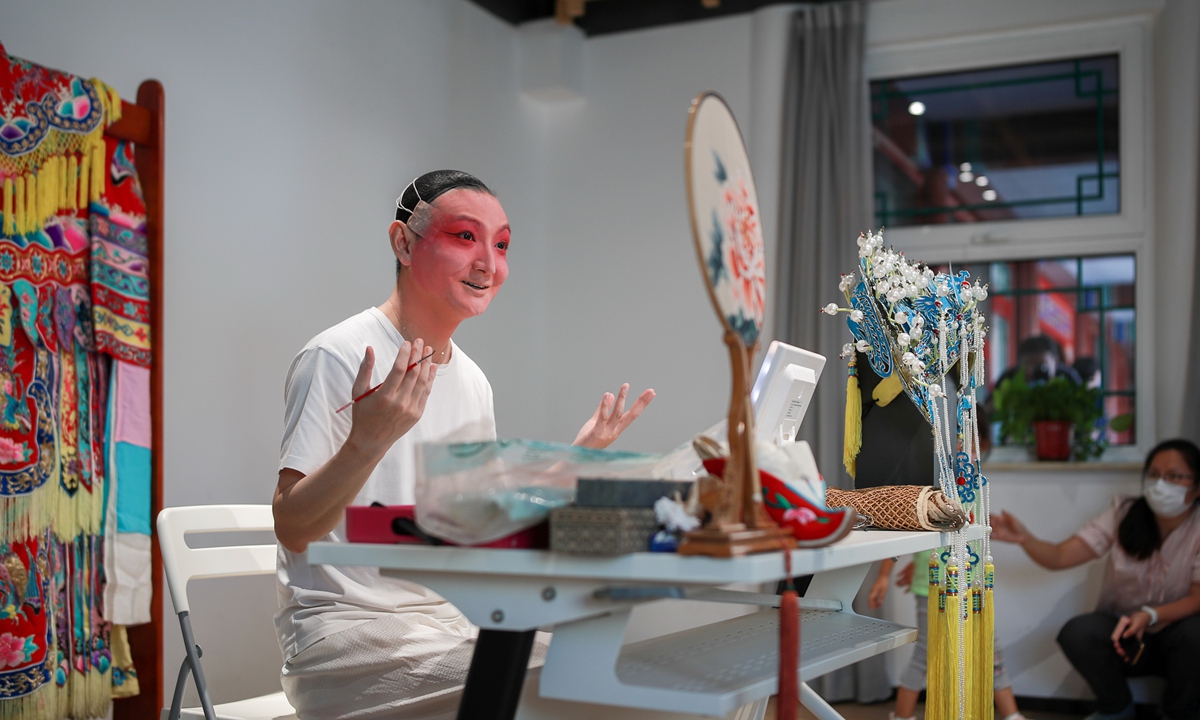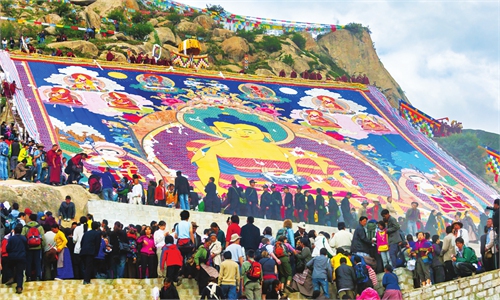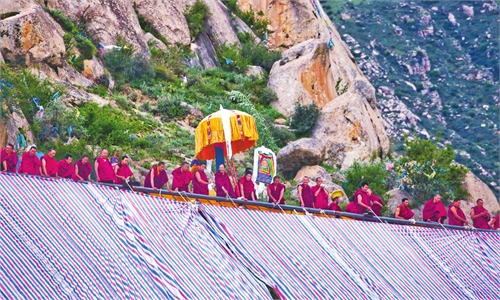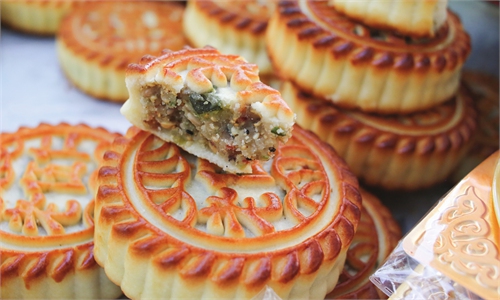ARTS / CULTURE & LEISURE
Cultural Heritage

Peking Opera actor Lu Wei introduces facial makeup to visitors in Beijing. Photo: IC
Peking Opera (I): China's national treasurePeking Opera is the most influential traditional opera in China. Centered in Beijing, it has spread to all parts of the country.
In 1755, during the reign of the Qianlong Emperor of the Qing Dynasty (1644-1911), four major Huiju Opera (from Anhui Province) troupes entered Beijing, marking the beginnings of Peking Opera. Later, Peking Opera integrated with the Hanju (from Hubei Province), Qinqiang (from Shaanxi Province) and Kunqu (from Jiangsu Province) operas, which helped enrich its tunes and acting skills. In the late 1900s, Peking Opera reached its mature stage with the emergence of many famous actors such as Tan Xinpei (founder of the Tan school). Since 1917, Peking Opera has flourished in China.
There are four major hangdang, or types of role in Peking Opera, including the sheng (male), dan (female), jing (painted face) and chou (clown). All role types are categorized according to age, sex, personality, profession and social status. Each role type has its own style of singing, reciting, acting and acrobatics as well as complete standard of costumes and facial makeup. In 1927, the most famous actors of the time - Mei Lanfang, Cheng Yanqiu, Xun Huisheng and Shang Xiaoyun - became known as the "Big Four Dans," marking the heyday of Peking Opera.
Soon afterwards, the "Big Four Xusheng [above the middle-aged male]" also appeared, namely Tan Fuying (Tan Xinpei's grandson), Ma Lianliang, Xi Xiaobo and Yang Baosen.
The establishment of these eight actors that represented eight schools signified their very high artistic attainments. Their performance styles and skills have been passed down till today. Each school has a unique standardized format of its own that has developed over a long period of time.
Peking Opera is a comprehensive stage art, involving literature, acting, music, singing and facial makeup.The feelings and ideas of the role types are all expressed through symbolic motions. Recitation in Peking Opera is based on the Beijing dialect, hence its name.
The four skills (singing, reciting, acting and acrobatics) are seen as the foundation of an actor's performance and must be developed through hard work from very early age.
The main vocal music of Peking Opera consists of xipi and erhuang. Xipi features high-pitched, lively and fluent tunes, while erhuang features steady, smooth and deep tunes.
The musical instruments used for the first category include the jinghu (Beijing fiddle), erhu (two-stringed fiddle), yueqin (moon lute), pipa (four-stringed lute) and xianzi (three-stringed lute), bamboo flute and suona (woodwind instrument).
Global Times



